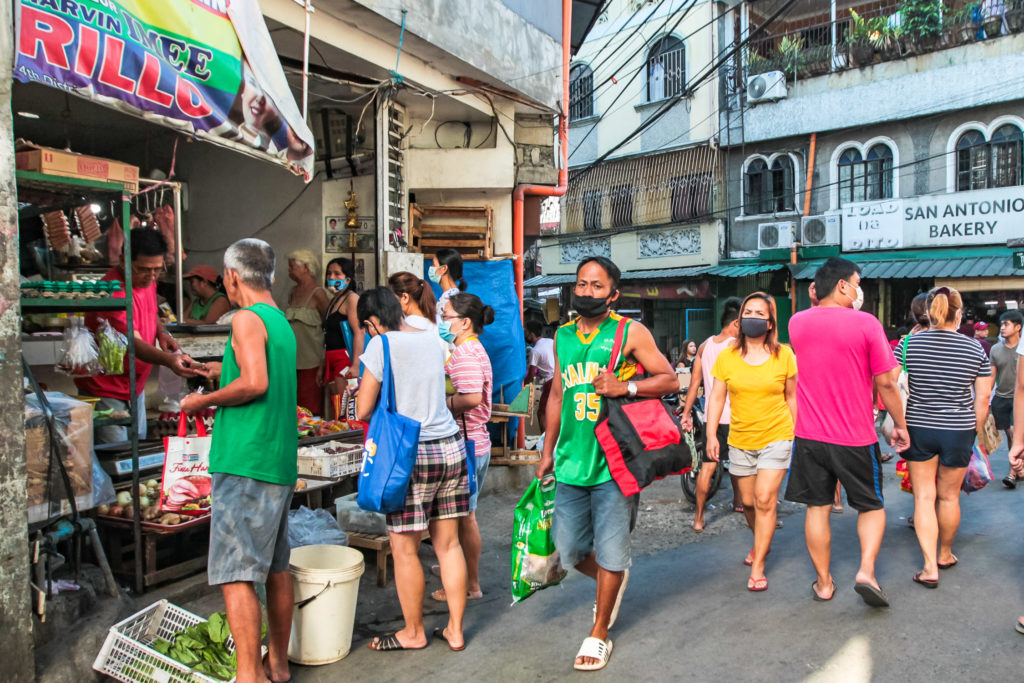MANILA, Philippines — Now that Metro Manila and other areas with a high number of COVID-19 cases are easing back to a general community quarantine (GCQ), a doctor has this advice: Act as if people you meet outside of your home are positive for the coronavirus and just make sure your risk of exposure is kept to a minimum.
“Maybe that’s what we need to do now because the numbers [of infection] are really as such that all our face-to-face encounters are possibly going to be with positive people,’’ said Dr. Anna Lim-Ong, chief of Infectious and Tropical Disease of the Pediatrics Department at the University of the Philippines.
As of Wednesday, August 19, 2020, the number of confirmed Covid-19 cases in the country has reached 173,774.
Read: PH COVID-19 cases surpass 170K mark with additional 4,650 cases
Speaking at a forum organized on Tuesday by the Foreign Correspondents Association of the Philippines (Focap), Ong said she hoped that with Metro Manila back under GCQ, people will “continue to … [make] sure our community remains safe’’ by practicing physical distancing, wearing protective masks and face shields, washing their hands frequently and avoiding touching their faces.Ong said those who could now go out and report for work should have a “mindset [that] everybody I’m going to meet as I step out of the house today is positive [of the virus].’’
Simple countermeasures
Wearing a face mask and face shield, and practicing social distancing are among the “simple low-tech interventions that continue to be very, very effective,’’ she said.
For Dr. Benjamin Co, chief of the University of Santo Tomas Hospital’s Pediatric Infectious Disease Section, the “most difficult part is [having] behavioral change in everybody.’’
Co told the Focap forum that those in the older age group and the so-called millennial generation tend to be hardheaded and unmindful of their actions.
It also doesn’t help that one- third of Metro Manila population live in informal settlements, in cramped homes and congested neighborhoods, where safety and health protocols are hard to enforce, he said.
With the World Health Organization saying most of the cases in the Philippines are those in the working-age group, Co said there was a need for companies to ensure that it has standard operating procedures to keep their workplaces “virus-proof’’ as he noted that big companies have human resources team that could monitor employees when they get sick.
Tip of the iceberg
Co also said that most of the cases he saw in working in three private hospitals were patients infected by family members in the household. He says these family members practice safety standards but they get infected for instance from their drivers who live outside the home.
Meanwhile, Co said the country was not yet seeing the real picture of its Covid-19 infection given that the Department of Health (DOH) is only reporting those who got tested for the new coronavirus.
“What you see is only the tip of the iceberg,’’ he said.
Co said the DOH was only reporting the people who got tested for Covid-19, those who recovered and those who died.
But he said the government did not know how many people who got better from the virus without getting tested.
He said the number of these recoveries without being tested could be about four or five times more although estimates place them as higher as 10 times more than those who got tested.
“We will know what the real data is at the end of the pandemic,’’ Co said.
Asked at the forum whether there was a need for an independent oversight body to check the accuracy of the DOH, Ong backed the call of the Health Professionals Alliance Against Covid-19 to “make the reporting system more efficient.’’
